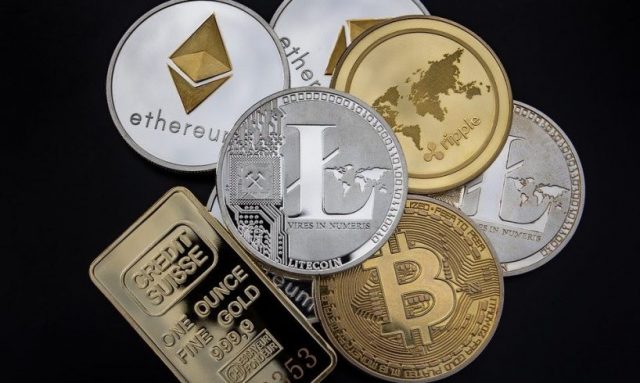A crypto community burns coins to destroy them. By “burning” them, cryptocurrencies can retain or enhance their value. Burning coins is like buying back stocks. When a company buys back some of its own stock, lowering the number of trading shares.
A coin burn can increase a cryptocurrency’s value, but there’s no assurance it won’t decline again.
Why Do People Burn Crypto?
Since all “currency” are digital as well as exists through blockchain, what does “burn” mean?
Think about purchasing and trading crypto first. Cryptocurrency is sent from one crypto wallet to another using the recipient’s private key. Users send cryptocurrency to an address” or burn wallets only accepting tokens and not transmitting them. This removes the currency from circulation. The coin (or crypto) burn is final once the blockchain confirms the transaction.
Six Reasons to Destroy/Burn Your Crypto
Digital currencies can benefit from burning coins. Some efforts use this process later, whereas others start with it. As Defi technologies spread, more people are burning their coins. Burning coins is sometimes appropriate. Now let’s read more to know the meaning of crypto burn
1. A way to reach a consensus
PoB (Proof of burn) helps coins attain a network consensus. Both users and miners must regularly burn currency. This method is liked because it doesn’t consume real-world resources.
2. To Protect Against Spam
Coin burning protects networks from DDoS attacks and spam transactions. Like Bitcoin and Ethereum, some networks require miners/validators to burn the transaction fees they collect.
3. A rise in coin value
If there’s less of a good or service but demand remains the same, the price must rise. Satoshi Nakamoto (a pseudonym) established the Bitcoin protocol to “halve” at four-year intervals, lowering miners’ block rewards. This reduces bitcoin production. Tossing coins works similarly. Burning coins cut down their supply.
In contrast to the inflationary effects of fiat currencies, the quantity of some cryptocurrencies is strictly limited. There can only be 21 million Bitcoins created.
Due to their scarcity, Bitcoins increase in value as more individuals invest in, hold on to, or spend them. Bitcoin’s price could increase in relation to conventional currencies if demand and supply remain stable. Future results can never be predicted based on the past.
Some alternative cryptocurrencies have resorted to coin burning to raise their currency’s value artificially.
4. To Maintain the Value of Stablecoins
Stablecoins may need coin burns to maintain their fixed exchange rate with fiat money (like the US dollar).
If a stablecoin’s price rises over its dollar anchor, the smart contract of the protocol will issue more tokens in order to bring it down or burn coins to raise it up, keeping its dollar anchor constant.
5. In Symbolic Long-Term Dedication
The cryptocurrency creators burn coins as a symbol of their commitment to the concept of scarcity. Currency holders benefit from scarcity (such as Bitcoin’s cap of 21 million). In order to accomplish this, proprietors may either employ a burn mechanism, set up a regular burn schedule, or conduct a one-time burn.
Some investors may view this as a method to ensure the continued growth of a coin’s value, which could encourage them to hold on for the long haul.
6. To Improve Mining Diversity
PoB can set a regular cycle for burning crypto to find harmony between fresh users and early entrants, including the platform’s earliest and sometimes greatest investors.
The mechanism of PoB consensus encourages currency production by destroying them when validating transactions. This may bring new and old users together.
Coin-burning types
1. Protocol-level coin burning
The first is the consensus of proof-of-burn. In PoB blockchains, coin burning is an automatic process. As long as the coin is operational, burning will be essential to the network.
Protocol-level coin burning is an effective anti-spam measure. To reduce network spam, it is important that transactions cost something. When a transaction is processed, a certain amount of money can be set to be burned instantly.
2. Burning Coins as an Economic Strategy
Second, developers may opt to burn coins to regulate inflation by limiting currency supply.
ICO tokens may be destroyed if not sold. New initiative developers may have manufactured X tokens with the purpose of selling them entirely but fell short. If creators want a constant supply, they may burn surplus coins.
3. Foregoing Dividends in Favor of Burning Coins
Some projects may burn coins to pay dividends to their coin holders. Token owners that manage a cash-generating business, like a crypto exchange, may burn coins to compensate token holders.
In order to increase the value of all participants’ cryptocurrency, the owners may choose to repurchase tokens from existing holders and destroy them. This might substitute dividends, which could result in regulatory hurdles for the underlying security. The act of burning might be a one-time occurrence or part of a regular ritual.
Follow Techiemag for more!
Table of Contents




![[Jan 2024] EZTV Proxy | Unblock EZTV | EZTV Alternatives eztv](https://www.techiemag.net/wp-content/uploads/2020/05/eztv-300x194.png)


